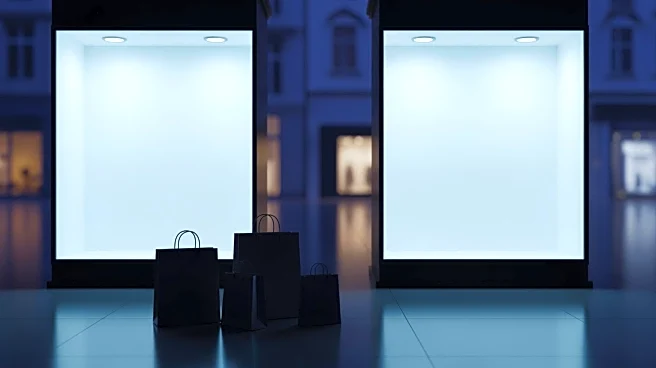What's Happening?
Saks Off Fifth, the discount arm of Saks Fifth Avenue, is set to close nine of its U.S. stores starting January 2026. This decision is part of a strategic move to focus on 'high-performing and high-potential
store locations.' The closures include the flagship store in New York's Upper East Side, scheduled to shut down on December 31, 2025. Other affected locations are in Austin, Chicago, Washington D.C., Philadelphia, Pittsburgh, Plymouth Meeting, East Hanover, Niagara Falls, and West Hartford. Saks Off Fifth operates approximately 100 stores across the U.S. and Canada. The closures are part of a broader trend in the retail industry, with over 2,500 U.S. store closures expected in 2025, driven by the increasing preference for online shopping.
Why It's Important?
The closure of these stores will impact consumers who prefer in-store shopping for discounted designer goods, especially during the holiday season. It may also lead to job losses and reduced foot traffic for nearby businesses. This move reflects a significant shift in consumer behavior towards online shopping, which is pressuring traditional brick-and-mortar stores. Saks Off Fifth's decision to optimize its store presence is aimed at ensuring long-term success by focusing on profitable locations and enhancing online offerings. This strategy is crucial as the retail industry faces challenges such as declining foot traffic, increased rents, and changing consumer preferences.
What's Next?
Saks Off Fifth plans to concentrate future investments on more profitable stores and expand its online offerings. The company has not announced any layoffs at the affected locations yet. As the retail environment continues to evolve, Saks Off Fifth's focus on high-performing stores and digital sales will be critical in adapting to consumer trends and maintaining competitiveness. Stakeholders, including employees and local businesses, will be closely monitoring the impact of these closures and the company's strategic direction.
Beyond the Headlines
The closures highlight the ongoing transformation in the retail sector, where digital commerce is increasingly dominating. This shift raises questions about the future of physical retail spaces and their role in consumer engagement. Ethical considerations regarding job losses and community impact are also pertinent as companies navigate these changes. Long-term, the retail landscape may see a redefinition of shopping experiences, balancing physical and digital interactions.













